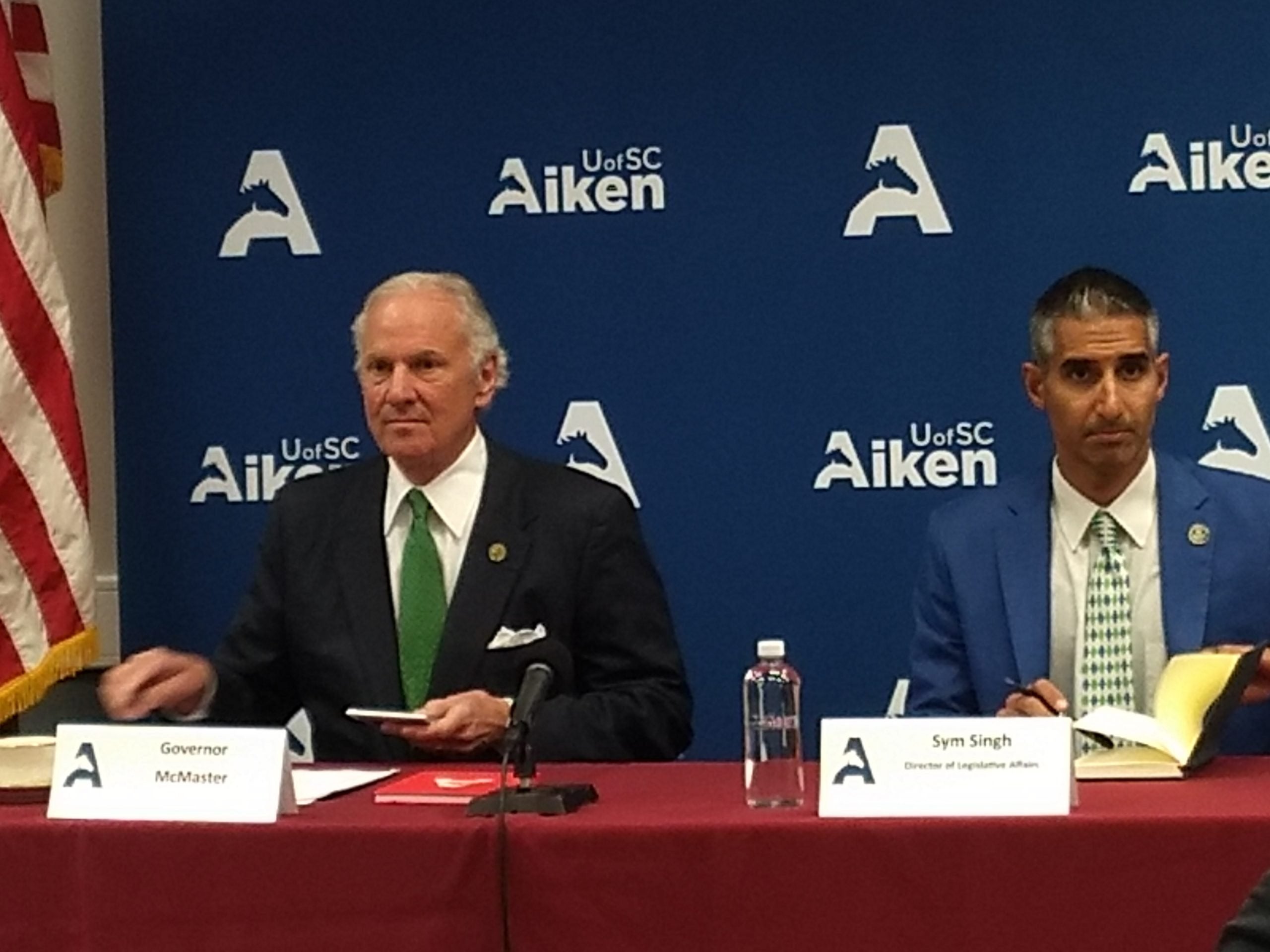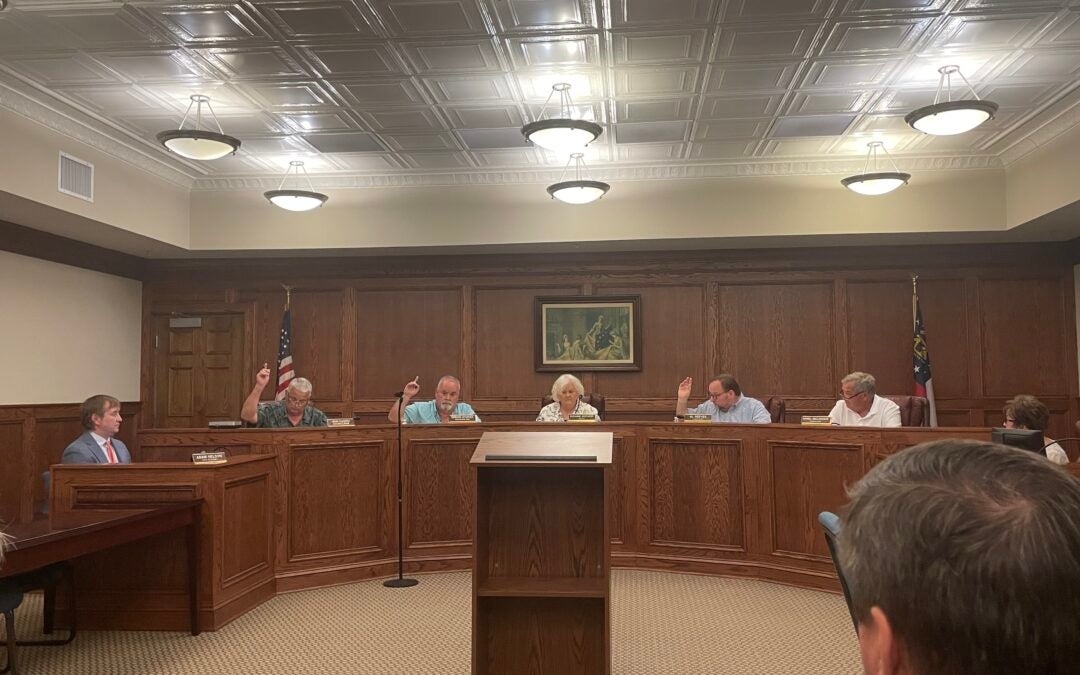South Carolina Gov. Henry McMaster sought input on how to divide the $525 million Savannah River Site settlement money at a town hall meeting at the University of South Carolina-Aiken campus on Aug. 20.
Elected leaders of Aiken, Barnwell and Allendale counties, along with the mayors of the city of Aiken and North Augusta told the governor their municipalities have felt the brunt of the impact from the site and deserve all the money.
MORE: Skyrocketing Budget Requested for the Savannah River Site
The money, originally $600 million until $75 million was paid to the attorneys, stems from the Department of Energy’s failed mixed oxide fuel fabrication that was to be built at SRS along with the weapons grade plutonium that was brought to the state to be converted into fuel pellets for reactor fuel assemblies.
McMaster also heard from Rep. Joe Wilson (R-SC), state Rep. Bill Clyburn (D-Aiken) and state Sen. Tom Young (R-Aiken), who gave a summary of what led up to the lawsuit that ended with the awarding of what Attorney General Alan Wilson called the largest settlement in South Carolina’s history.
[adrotate banner=”19″]
Young explained the 2002 agreement to bring plutonium to SRS and build the MOX facility included a penalty payment if the terms of the agreement were not fulfilled, including the removal of the plutonium from SRS if the MOX project was not built. The federal government would have to pay South Carolina a $1 million a day, up to a $100 million impact fee. The MOX project was terminated in 2018. The deal to settle a lawsuit was announced in 2020.
SRS straddles Aiken, Barnwell and Allendale counties. Young said the three counties deserve the money.
“The vast majority of these funds should be invested in these three counties that have been impacted by the failure of the federal government to fulfill the MOX project,” said Young. “The settlement document itself says the $600 million dollar payment is for, quote, ‘economic and impact assistance.'”
Young listed several projects worthy of funding with the settlement money, including the New Savannah Bluff Lock and Dam. The U.S. Army Corps of Engineers wants to remove the aging and deteriorating structure and replace it with a rock weir to allow for fish migration. Young said keeping the structure in place will protect the riverfront along Aiken County and North Augusta.
North Augusta Mayor Briton Williams agreed, saying that, “Maintaining the water level of that river and functionality of the lock and dam are critical for the industries in Aiken County and the city of North Augusta. We’ve already seen what will happen if the water level is lowered without the lock and dam. Our beautiful river became a mud flat.”
[adrotate banner=”54″]
Other ways to invest the money in the three counties included working with Fort Gordon and the city of Augusta to expand cyber capabilities, paying for the Whiskey Road corridor and Powerhouse Road connector in Aiken as well as education, infrastructure, expanding broadband coverage and economic development across all three counties.
During a news conference following the meeting, McMaster said the state has a rare opportunity to make transformative change in the future of South Carolina.
MORE: DOE Greenlights Pit Production at SRS, Environmental Groups File Suit to Stop It
“This is a lot of money, and we need to be very careful,” he said. “I was very interested in the depth of understanding and insight that was presented by the speakers.”
Leaders and citizens in the three counties have been concerned that some of the money will be siphoned off and used in counties across the state. McMaster said he believes most of the money needs to stay in Aiken, Barnwell and Allendale counties.
In addition to the money, the settlement calls for the Department of Energy to remove the plutonium stored at SRS. It must be removed no later than 2037.
Dana Lynn McIntyre is a Staff Reporter with The Augusta Press. You can reach her at dana@theaugustapress.com.
[adrotate banner=”51″]











